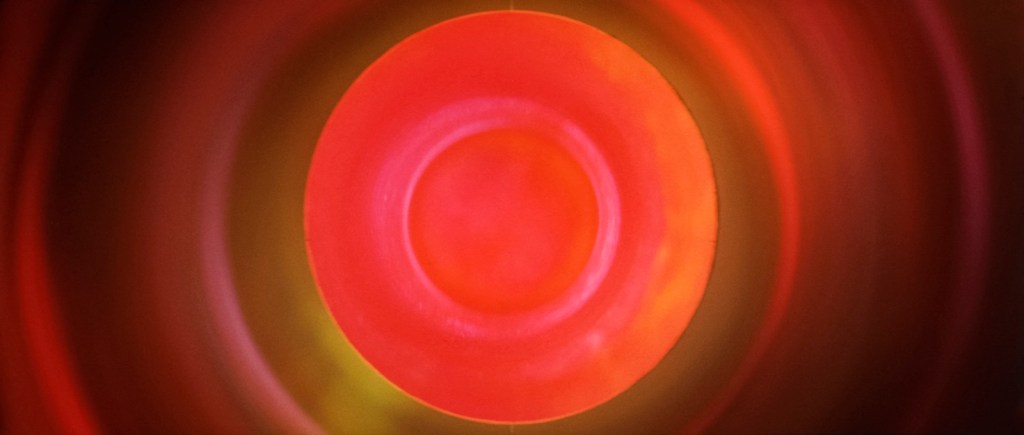Tacita Dean is no stranger to Australia. In 2014, she created a major new performative work for the 19th Biennale of Sydney. Over four nights, she filmed Stephen Dillane as “the actor” in front of a live audience, using two 16mm cameras as part of the event. Each performance was unique. The outcome of that intervention was the film, Event for a Stage (2015), and it is now showing as part of a new survey exhibition of Dean’s work at the Museum of Contemporary Art Australia (MCA).
It will be the first time for Australian audiences to draw a connection between the two, and to place Dean’s work within a broader context. Needless to say, it is a long film, and one of several in the exhibition over 30 minutes, encouraging audiences to slow down.
Time has long been a preoccupation of Dean’s – often as a progenitor for chance and change across art history, memory and climate change. It makes for a meaty exhibition that is delivered with a tone of nostalgia and sensitivity.
MCA Director Suzanne Cotter describes Dean as ‘undoubtedly one of our greatest living artists and an artist that truly speaks to our contemporary moment’. The self-titled exhibition maps work made by Dean over the last decade, and moves across installation, monumental chalkboard drawings, photography, prints and film – for which she is perhaps best known.
But we are not talking your usual multi-screen digital projection in a 21st century gallery setting. Dean, rather, embraces past filmic technologies and nuances of art history. Viewers get a hint of this walking into the exhibition and hearing the clickety-clack sound of a 16mm projector. The work, Buon Fresco (2014), comprises an exposed projector and a floating screen.
Viewers become witness to a piece of art history – the detailed brushstrokes of Giotto di Bondone’s 13th century frescos in the Basilica of St Francis of Assisi, Italy. Rather than a hazy blur viewed from the ground with a craned neck looking upwards, Dean delivers us (courtesy of a macro lens and scissor lift), to the position where di Bondone would have been when painting.
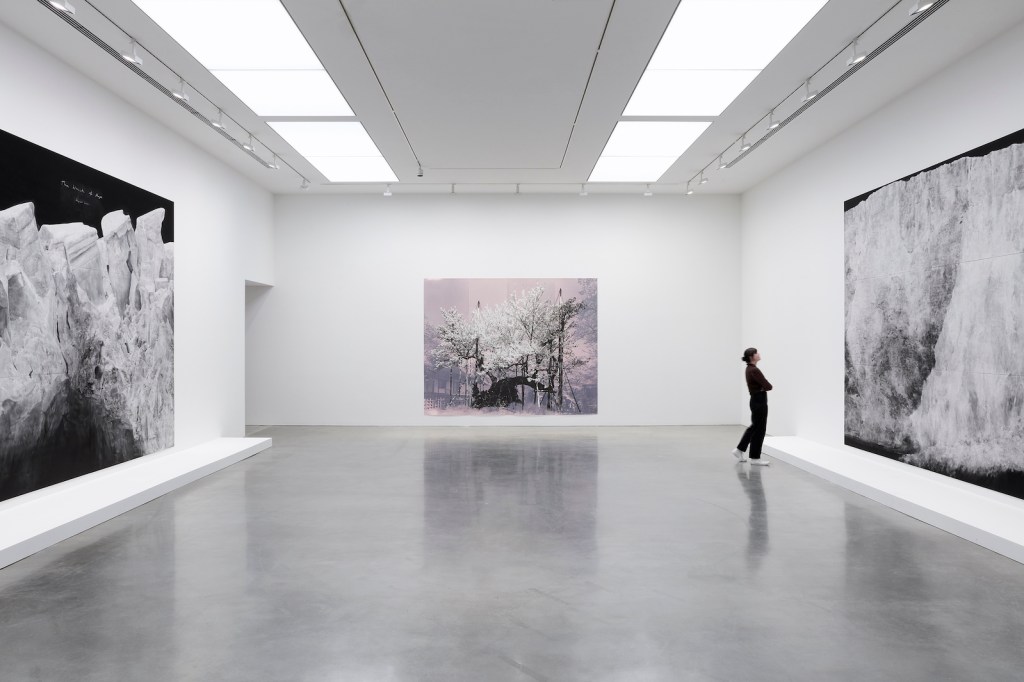
Natural phenomena is another of Dean’s recurring motifs, and in this exhibition her expansive drawings, The Wreck of Hope (2022) and Chalk Fall (2018), bring a strong climate message through their monumental scale. They are made from regular old chalk, and what is mind-blowing is that these drawings are unfixed (meaning they can smudge) echoing the fragility of their subject matter – a melting glacier and the White Cliffs of Dover (also made of chalk). They are a sure highlight of this exhibition.
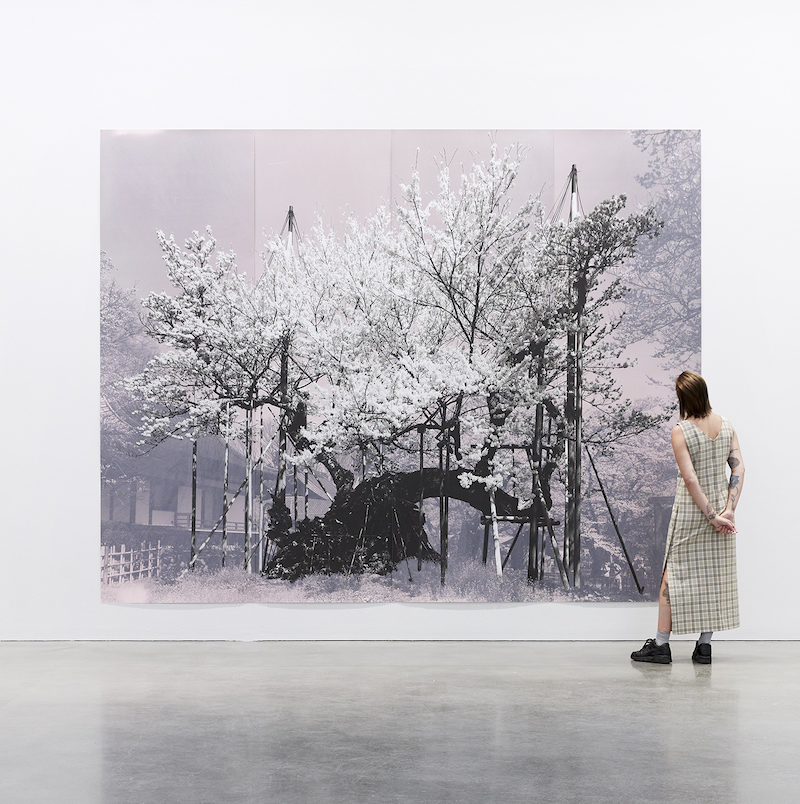
They sit alongside another stunning work, Sakura Study (Jindai II) (2023), a large-scale photograph that Dean has overdrawn in pencil – the laborious time to make this work is in sync with its very narrative. The cherry tree photographed is estimated to be 2000 years old.
Earlier in the exhibition viewers are introduced to this same hand-drawn technique with, Exceptional Study for Threshold for Purgatory (2023), a large-scale image of a jacaranda tree that Dean photographed in Los Angeles. Using it as a negative (i.e. the purple foliage reads as green) Dean has hand-coloured the rest of the image.
It is part of The Dante Project (2021), which resulted from her being commissioned to create the set designs and costumes for the ballet (of the same title) at the Royal Opera House, London. This was a collaboration with choreographer Wayne McGregor and composer Thomas Adès, whose soundtrack pairs with Dean’s 35mm cinemascope abstract film Paradise (2021).
Given Dean is known for her films, this exhibition has been curated so that it is peppered with both new and celebrated older works. The highlight of the survey is the new filmic installation, Geography Biography (2023), described as her ‘most biographical work to date’.
Two 35mm projectors (an artwork in themselves on a custom circular podium) display a diptych of imagery upon a curved wall, constructed from outtakes of her 16mm films and her early Super and 8mm films. Dean calls it an ‘accidental self-portrait’.
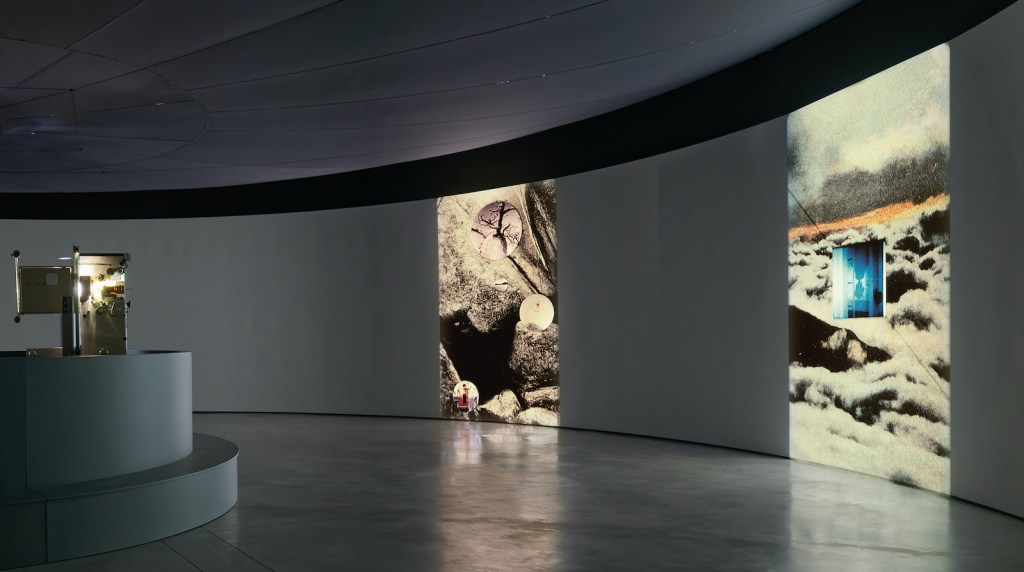
What is nice about this exhibition is the way it connects across space. For example, included in Geography Biography are outtakes from her filmic portrait, Claes Oldenburg draws Blueberry Pie (2023) showing the artist in his Manhattan studio. Then there is a suite of studio works where we see her first use of chalk next to the gallery that houses her enormous chalk drawings.
It is this tight curatorial lens that pulls this exhibition together so beautifully. It is easy viewing for audiences and, because of Dean’s adept vocabulary of material use, there is a lovely nuance and energy moving through the galleries, as a narrative builds.
Read: Exhibition review: NGV Triennial 2023
At times that narrative feels voyeuristic, as in Geography Biography, Claes Oldenburg draws Blueberry Pie and One Hundred and Fifty Years of Painting (2021), where we are witness to a casual conversation between the painters Luchita Hurtado (1920 – 2020) and Julie Mehretu (born 1970). There is something delicious in that invitation to connect.
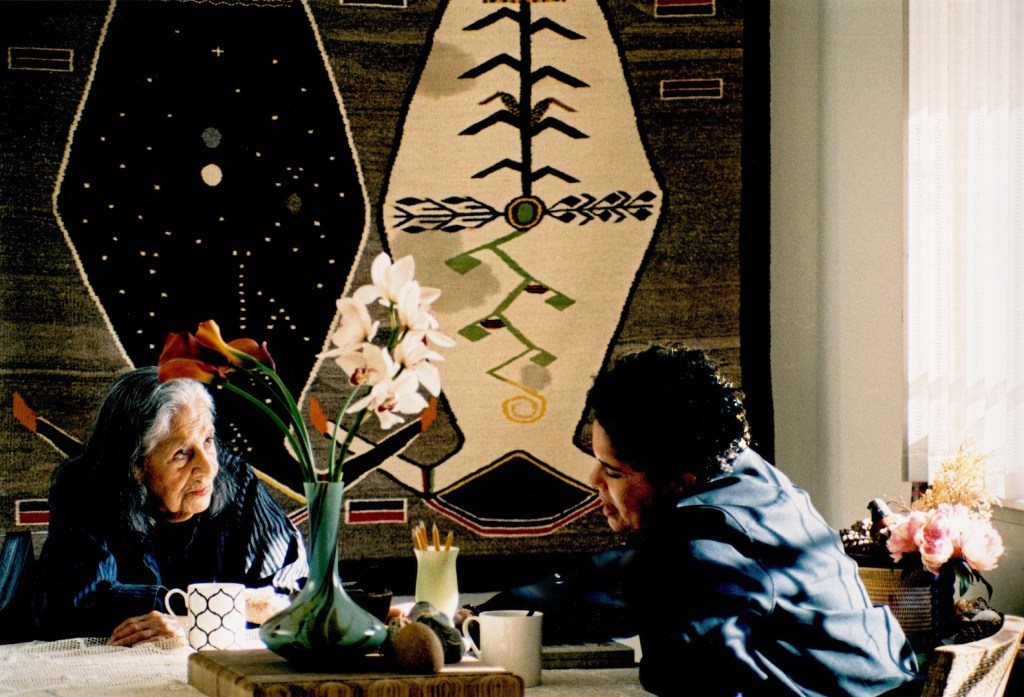
There is an everyday quality to these works, which – if you allow yourself to take the leap – is also celebrated in other works, such as Telomere 1-4 (2023), a suite photogravures made from a metal ramp from Dean’s Paris studio, and built up over the course of a year with layers of intaglio, collage, screenprint and drawn marks.
Or her images of clouds – one of the first works viewers encounter – which line a corridor. Let’s be honest, there is nothing unique about “cloud art”, but Dean’s snaps are not photographs; rather they are impeccable analogue works, created as hand-drawn lithographs. Again, time is the persistent lament urging us to slow down and take in the world that surrounds our everyday.
Her works are extremely poetic and this exhibition – the largest of her work in the southern hemisphere to date – is perfectly timed as our world starts to again speed up post-pandemic, and where some of the recalibration to connect, to stop and to appreciate, is already slipping away.
Tacita Dean was born in the UK and now lives in Los Angeles and Berlin.
Tacita Dean
Curator: MCA Director Suzanne Cotter, Senior Curator Exhibitions Jane Devery and Curator Megan Robson
Museum of Contemporary Art Australia
Until 3 March 2024
Presented as part of the Sydney International Art Series 2023/2024; ticketed.
